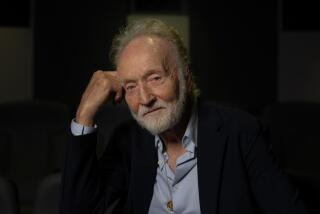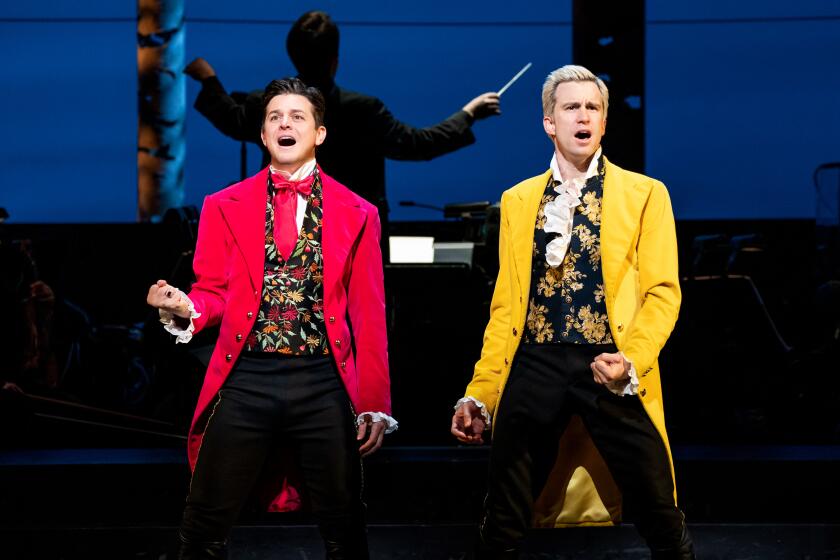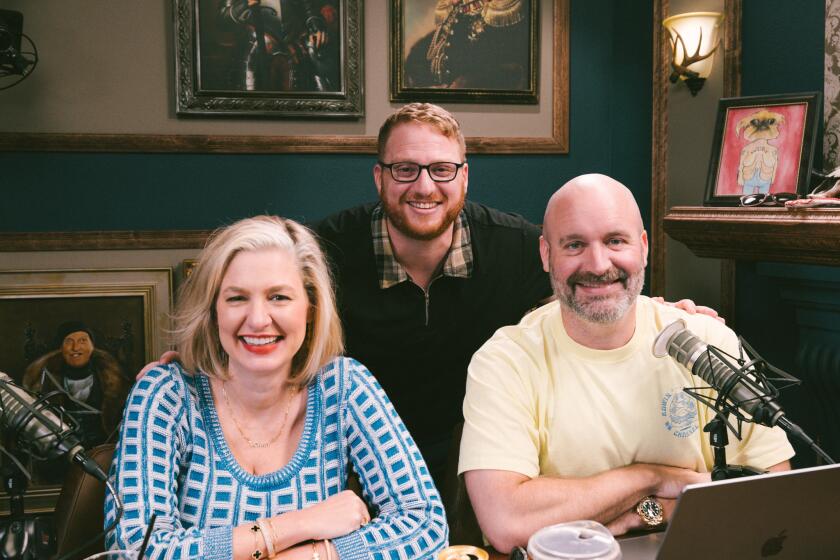‘Liaisons’ a Tricky Outing in San Francisco
“The Dangerous Liaisons”--still eyebrow-raising nearly two centuries later--resurfaced as an opera by Conrad Susa and librettist Philip Littell Saturday night, when San Francisco Opera gave the piece its world premiere. There will be talk, of course, but probably not much of it about the music.
Pierre Choderlos de Laclos’ once-scandalous epistolary novel has sired a litter of noteworthy theater projects and no fewer than three films, by Roger Vadim and Milos Forman as well as, more famously, by Stephen Frears. Could an opera be far behind? Only behind the musical times.
This not-particularly dangerous or even naughty “Liaisons,” which represents the first San Francisco Opera commission to reach its main stage in 18 years--with a star-studded cast conducted with force and cogency by the company’s music director, Donald Runnicles--may break some new ground as a theater piece. As music it’s as unmemorable as the Vicomte de Valmont’s last conquest. And demonstrably far less pretty.
In most other respects, the new production looks ravishing. When it is filmed for television, I hope the director doesn’t tamper with Thomas Munn’s magisterial lighting plot--as subtle as the novelist’s is not.
Resident designer Gerard Howland’s physical production attempts Hollywood-level veracity and atmosphere and largely succeeds. The visually arresting costumes and decors are flexible to the point of seeming recombinant.
*
Production director Colin Graham, who achieved a similar look and feel with the Metropolitan Opera’s most recent commission, “The Ghosts of Versailles,” is remarkably successful at visually overlaying scenes, locales and character groupings fluidly, frequently to telling dramatic effect. Since these overlays lie at the heart of the way this production was conceived and in fact works best, it’s the greater pity that the vocal ensembles contain Susa’s most off-putting music.
Saddest of all, the main problem with Susa’s score may not even be his work. The program discreetly lists Donald Ontiveros, Manly Romero and “Music Publications Technologies” under a new category called “orchestration and editorial assistance.”
But, in the weeks before the premiere, you didn’t even have to be a member of the local music community to learn that someone close to you was orchestrating a passage or two. Perhaps that’s why the brass sounded so glaringly ill-tuned in the opera’s crucial opening minutes. It’s hard to sight-read in the pit.
Instrumentally, everything from harp to didgeridoo appears, seemingly randomly, on Susa’s orchestral palette. All that was missing was a sense of coherent musical style--for a story about style to the exclusion of all else. Oh, and characterful, even grateful, vocal writing.
Susa gave one of the better aggregates of singing actors on the stage today the kinds of slack, shapeless musical lines even great singers fear falling from. His cast took to them as if they were top-drawer Verdi.
The score also exaggerated the occasional infelicities (pointless rhymes, mostly) in Littell’s largely successful free-verse English libretto. Since the music was applied as if with a trowel, one was grateful for the supertitles.
Frederica von Stade’s lusciously husky, prismatically detailed realization of the central Marquise de Merteuil should get the world’s remaining operatic composers writing roles for her uniquely sympathetic gifts. Just as Michelle Pfeiffer threatened to make Frears’ “Dangerous Liaisons” her movie, Renee Fleming’s melting--then molten--Madame de Tourvel compelled the audience with her gorgeous suffering. But in the short final scene, Stade’s raging, smallpox-stained rondo-finale recouped center stage, sweeping all else before it.
Baritone Thomas Hampson may have found more dimensions in Valmont’s character than are there. The unremitting beauty of his singing didn’t keep him from being positively shattering in Valmont’s moment of truth. In his U.S. debut as the Chevalier de Danceny, Australian David Hobson contributed his teen heartthrob looks and, unfortunately, some teen-aged vocal instability.
As his beloved Cecile de Volange, soprano Mary Mills sang and acted large circles around him. Judith Forst skillfully negotiated the baffling coloratura aria Susa wrote for her and volunteered generous amounts of vocal luster and characterization. Former Isolde Johanna Meier was both imposing and touching as Madame de Rosemonde. Comprimario contributions were at the usual, which is to say high, San Francisco standards.
Despite the cumulative power of its second act, Susa’s “The Dangerous Liaisons” lacks the musical substance to make it sustaining beyond the final curtain. In a wicked twist on the stately departure of the countess for dinner in Richard Strauss’ “Capriccio,” Stade’s Merteuil exits with a raspy, overwrought, “I’m hungry.” So, unfortunately, are we.
More to Read
The biggest entertainment stories
Get our big stories about Hollywood, film, television, music, arts, culture and more right in your inbox as soon as they publish.
You may occasionally receive promotional content from the Los Angeles Times.










